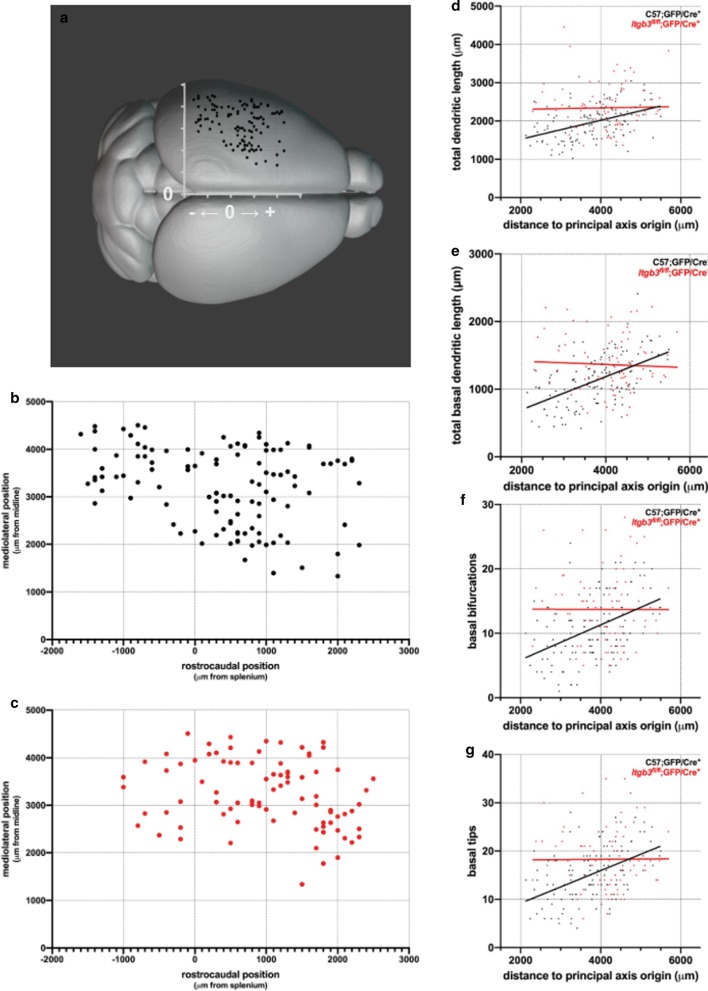Fig. 2.
In contrast to Itgb3fl/fl;GFP/Cre+ neurons, tangential cortical positions of C57;GFP/Cre+ layer II/III neurons are correlated with dendritic complexity. a 3D schematic showing cortical (x,y) positions of neurons in (b) over a dorsal view of the mouse brain. The x-axis measures distance away from the splenium of the corpus callosum (positive numbers are rostral), and the y-axis measures distance away from the midline. b Cortical (x,y) positions of C57;GFP/Cre+ neurons. c Cortical (x,y) positions of Itgb3fl/fl;GFP/Cre+ neurons. d Total dendritic length is significantly correlated to cortical position along a tangential gradient among layer II/III C57;GFP/Cre+ neurons, but not among Itgb3fl/fl;GFP/Cre+ neurons (linear regression; respective regression slopes are significantly different). e Total basal dendritic length, f number of basal bifurcations, and g number of basal tips are all correlated to cortical position along a tangential gradient among C57;GFP/Cre+ but not Itgb3fl/fl;GFP/Cre+ neurons. In each graph, the linear regression slopes between C57;GFP/Cre+ and Itgb3fl/fl;GFP/Cre+ are significantly different. R2 and p-values for (g–j) are summarized in Table 1. C57;GFP/Cre+ neurons were previously reported in Holley et al. [31] and re-analyzed for this study. 3D model of mouse brain
© 2017 Allen Institute for Brain Science, Allen Mouse Common Coordinate Framework (CCFv3) [78]. Available from: atlas.brain-map.org. C57;GFP/Cre+ N = 116 neurons; Itgb3fl/fl;GFP/Cre+ N = 86 neurons

